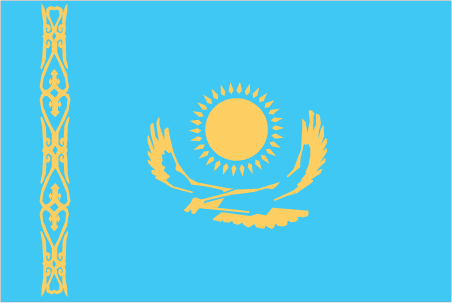To help inspire or plan your trip to Kazakhstan, some of its major attractions
for travellers are shown below, including some of the best natural, historical, cultural and adventure sites in the country.
These include all of UNESCO World Heritage Sites for Kazakhstan which represent the best
of the world's cultural and natural heritage.
Click on the icons below to focus on specific types of features
(click again to return to all).
|
|
|
|
|
|
|
|
|
|
|
|
 |
|---|---|---|---|---|---|---|---|---|---|---|---|
| Natural | History | Wildlife | Trekking | Cities | Religious Monument | Boat Journey | Rail Journey | Diving | Cultural | Adrenaline | UNESCO WHS |
| Almaty | |
|---|---|
Although no longer the capital of Kazakhstan, Almaty remains its commercial and cultural hub. Almaty is a modern cosmopolitan city, developed from the country's oil wealth and with a strong Russian influence. Its attractions include the multi-coloured wooden Zenkov Russian Cathedral, the Arasan baths for a Russian sauna experience and the war memorials of Panfilov Park, named for the 28 Panfilov guards who died defending Moscow in 1941. Its museums include the Central State Museum, the Museum of Musical Instruments and the Kazakhstan Museum of Arts. The city is set against a backdrop of the Tien Shan mountains, with the Big Almaty Lake, surrounded by mountain peaks, a particular attraction. | |
| Charyn Canyon | |
|---|---|
Close to Almaty, the Charyn Canyon is 80km long and 200-300 metres in depth. Often compared to the Grand Canyon, Charyn Canyon has been created by erosion and weathering, leaving unusually shaped rock formations with a variety of colours of rock and earth. | |
| Taraz | |
|---|---|
The ancient town of Taraz, over 2,000 years old, was once a haven for Silk Road travellers. Its attractions include the 11th century Islamic shrines the Dauitbek and Kharakhan Mausoleums, the Regional Museum and the Central Bazaar for buying crafts and silks. Close to the town lie the famous Mausoleums of Aysha-Bibi and Babazhi Katun. | |
| Aksu-Dzhabagly Nature Reserve | |
|---|---|
The Aksu-Dzhabagly Nature Reserve is a region of beautiful natural scenery and offers a chance for cultural interactions with local Kazakh people in the local villages. The highlights of the reserve, which can be explored by hiking or horse riding, are the Aksu Canyon, the deepest in Asia, and the thousands of red tulips dotting the meadows during spring. The park is home to 42 species of animals including the snow leopard, the Tien Shan brown bear and the Siberian ibex. | |
| Turkistan | |
|---|---|
Turkistan in southern Kazakhstan contains more historical sites than any other place in the country. It is home to Kazakhstan's most famous and iconic building - the Mausoleum of Khoja Ahmed Yawasi, a great Turkic holy man and Sufi. This was built during the time of Tamerlane in the 14th century and is one of the largest and best preserved buildings of this period, with the designs later influencing the construction of Samarkand. Surrounding the mausoleum are a rose garden, an archaeological museum, a mosque and other monuments. Close to Turkistan are the ruins of the old Silk Road city of Sauran. UNESCO World Heritage Site: Mausoleum of Khoja Ahmed Yasawi | |
| Petroglyphs within the Archaeological Landscape of Tamgaly | |
|---|---|
The Tamalgy Gorge Petroglyphs comprise some 5,000 carvings dating from the Middle Bronze Age (14th century BC) to the 20th century and illustrate the husbandry, social organization and rituals of pastoral peoples. The site also includes the remains of human settlements and burial grounds. UNESCO World Heritage Site: Petroglyphs within the Archaeological Landscape of Tamgaly | |
| Saryarka - Steppe and Lakes of Northern Kazakhstan | |
|---|---|
This site comprises Naurzum State Nature Reserve and Korgalzhyn State Nature Reserve which are important wetlands for migratory birds such as the Siberian white crane, the Dalmatian pelican and Pallas’s fish eagle that use the region as a stopover en route to their breeding grounds in Siberia. UNESCO World Heritage Site: Saryarka – Steppe and Lakes of Northern Kazakhstan | |
Other World Heritage Sites in Kazakhstan
 | Silk Roads: the Routes Network of Chang'an-Tianshan Corridor | Cultural site | ||
|---|---|---|---|---|
 | Western Tien-Shan | Natural site |


